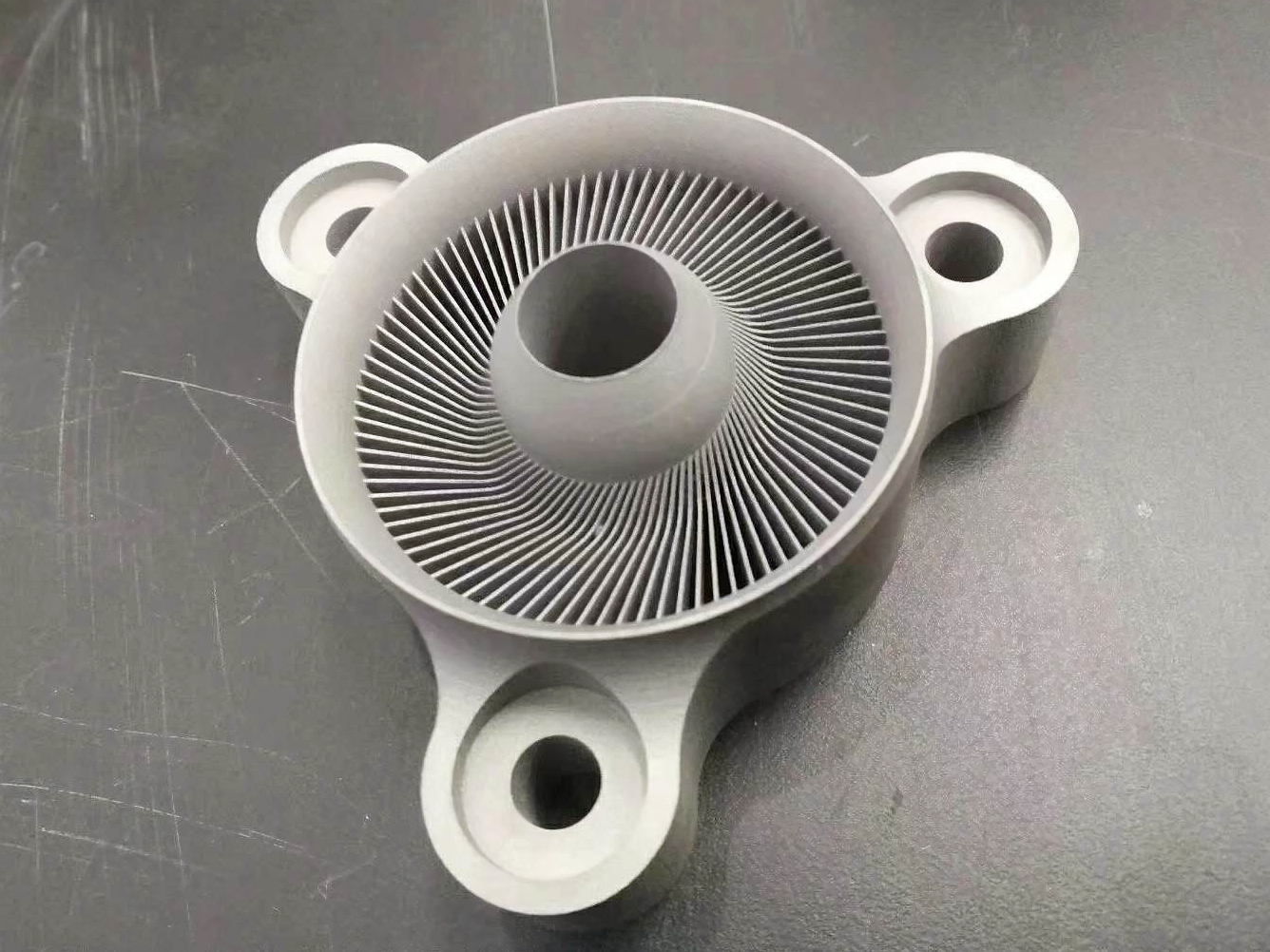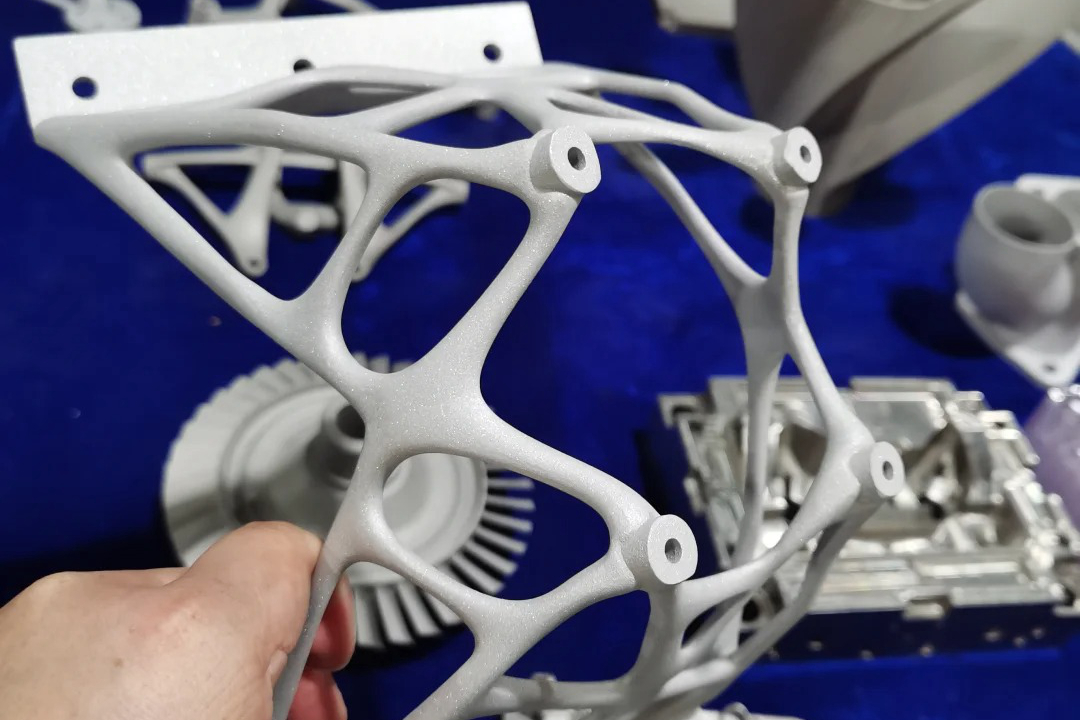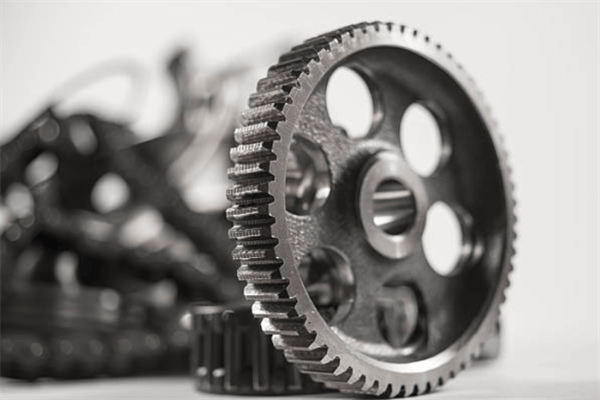Revolutionizing Industries with Custom Stainless Steel 3D Printing
 Stainless steel 3D printing offers significant advancements in manufacturing, enabling the production of high-strength, durable parts with complex geometries. With applications in industries such as aerospace, automotive, medical, and tooling, stainless steel 3D printing is transforming the way custom components are produced. Thanks to its high tensile strength, corrosion resistance, and ability to create geometrically complex parts, stainless steel is preferred for many industries requiring precision and reliability.
Stainless steel 3D printing offers significant advancements in manufacturing, enabling the production of high-strength, durable parts with complex geometries. With applications in industries such as aerospace, automotive, medical, and tooling, stainless steel 3D printing is transforming the way custom components are produced. Thanks to its high tensile strength, corrosion resistance, and ability to create geometrically complex parts, stainless steel is preferred for many industries requiring precision and reliability.
Advantages of Stainless Steel in 3D Printing
Stainless steel’s versatility and superior mechanical properties make it ideal for 3D printing. Key advantages of using stainless steel in additive manufacturing include:
Strength and Durability: Stainless steel offers a tensile strength of approximately 500-800 MPa, making it ideal for high-stress applications such as aerospace components, automotive parts, and tooling.
Corrosion Resistance: Stainless steel’s inherent resistance to corrosion is crucial in industries like medical devices, marine equipment, and food processing, where hygiene and durability are essential.
Customization: 3D printing allows for creating parts with intricate geometries and internal features such as cooling channels, which would be difficult or impossible to achieve with traditional methods.
Rapid Prototyping and Production: Stainless steel 3D printing enables rapid prototyping, reducing the time it takes to bring products to market. It is also an effective solution for low- to medium-volume production runs.
Stainless Steel 3D Printing Technologies
Several 3D printing technologies are used to manufacture stainless steel parts. The choice of technology depends on the specific application, material properties, and part requirements. Key technologies include:
Selective Laser Melting (SLM): SLM uses a high-powered laser to melt stainless steel powder, layer by layer, creating fully dense and highly detailed parts. SLM is ideal for producing complex, high-performance parts for aerospace, automotive, and medical applications.
Direct Metal Laser Sintering (DMLS): DMLS is a metal 3D printing process similar to SLM but focuses on creating parts with mechanical properties that closely resemble those made through traditional processes like casting or forging.
Powder Bed Fusion (PBF): PBF uses a laser or electron beam to fuse layers of stainless steel powder, producing highly detailed and strong parts with complex internal structures. PBF is commonly used for tooling, machinery components, and automotive applications.
Key Applications of Stainless Steel 3D Printing
Stainless steel 3D printing is increasingly used in several industries to produce functional, custom components. Some of the key applications include:
Aerospace: Stainless steel 3D printing creates complex components such as brackets, mounting fixtures, and fuel nozzles. Its high strength and resistance to corrosion are crucial for parts that must withstand high temperatures and mechanical stress.
Automotive: In the automotive industry, stainless steel 3D printing is used for manufacturing engine components, brackets, and custom tooling. It enables the production of parts with reduced weight and improved strength-to-weight ratios, benefiting fuel efficiency and performance.
Medical: Stainless steel 3D printing is used for medical devices such as surgical tools, implants, and prosthetics. The material’s biocompatibility and strength make it ideal for high-precision medical applications.
Tooling and Manufacturing: Stainless steel 3D printing is also used for manufacturing custom molds, dies, and jigs for manufacturing processes like injection molding and die casting. It allows for faster turnaround times and customization compared to traditional tooling methods.
Benefits of Stainless Steel 3D Printing
Design Flexibility: 3D printing with stainless steel enables the creation of parts with complex internal structures, lightweight geometries. It features like internal cooling channels that would be impossible or impractical with traditional manufacturing methods.
High Performance: Parts made from stainless steel in 3D printing have comparable mechanical properties to traditionally manufactured stainless steel parts. They offer high strength, excellent wear resistance, and good thermal properties, making them suitable for demanding applications.
Reduced Lead Time: Stainless steel 3D printing significantly reduces the time required for prototyping and production. Custom parts can be produced on demand, without expensive molds or tooling, streamlining production.
Cost-Effectiveness for Low-Volume Production: For custom parts and low-volume production, stainless steel 3D printing eliminates the high costs associated with traditional manufacturing processes, making it a cost-effective solution for industries that need specialized components.
Challenges of Stainless Steel 3D Printing
While stainless steel 3D printing offers many benefits, there are some challenges associated with the process, including:
Surface Finish: 3D printed stainless steel parts may require post-processing such as polishing, grinding, or machining to meet the desired surface finish and dimensional accuracy.
Residual Stresses: The rapid cooling during printing can introduce residual stresses in the parts. Post-processing techniques such as stress-relief annealing are often necessary to mitigate these stresses and ensure part integrity.
Material Variability: Achieving consistent material properties across large parts can be challenging with metal powders. Careful control of printing and powder handling is essential to ensure uniformity and part quality.
Conclusion
Custom stainless steel 3D printing is revolutionizing industries by enabling the production of strong, durable, and complex parts with improved efficiency. The ability to print custom components with intricate designs and its high tensile strength and corrosion resistance make stainless steel 3D printing a valuable tool in sectors such as aerospace, automotive, and medical manufacturing. As the technology continues to evolve, stainless steel 3D printing will play an increasingly important role in meeting the needs of advanced industries.
FAQs
What are the key advantages of stainless steel 3D printing over traditional manufacturing methods?
Which industries benefit the most from stainless steel 3D printing?
What 3D printing technologies are most suitable for stainless steel?
What challenges exist when 3D printing stainless steel, and how can they be addressed?
How does stainless steel 3D printing compare to traditional methods in terms of strength and performance?



